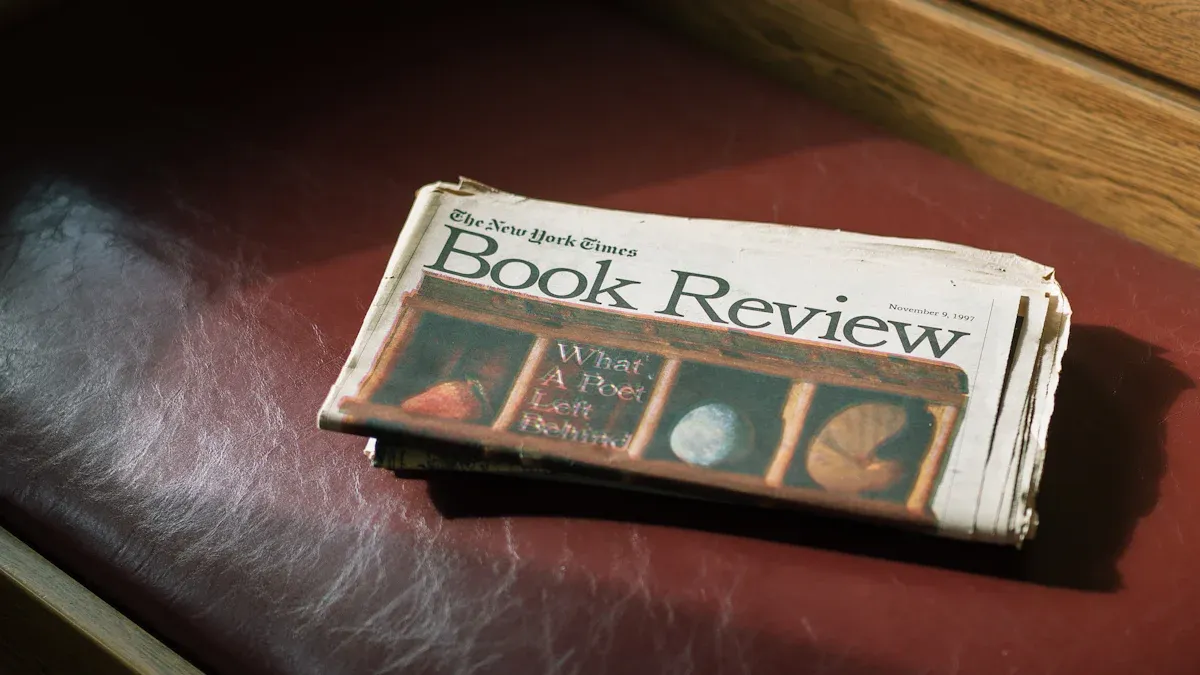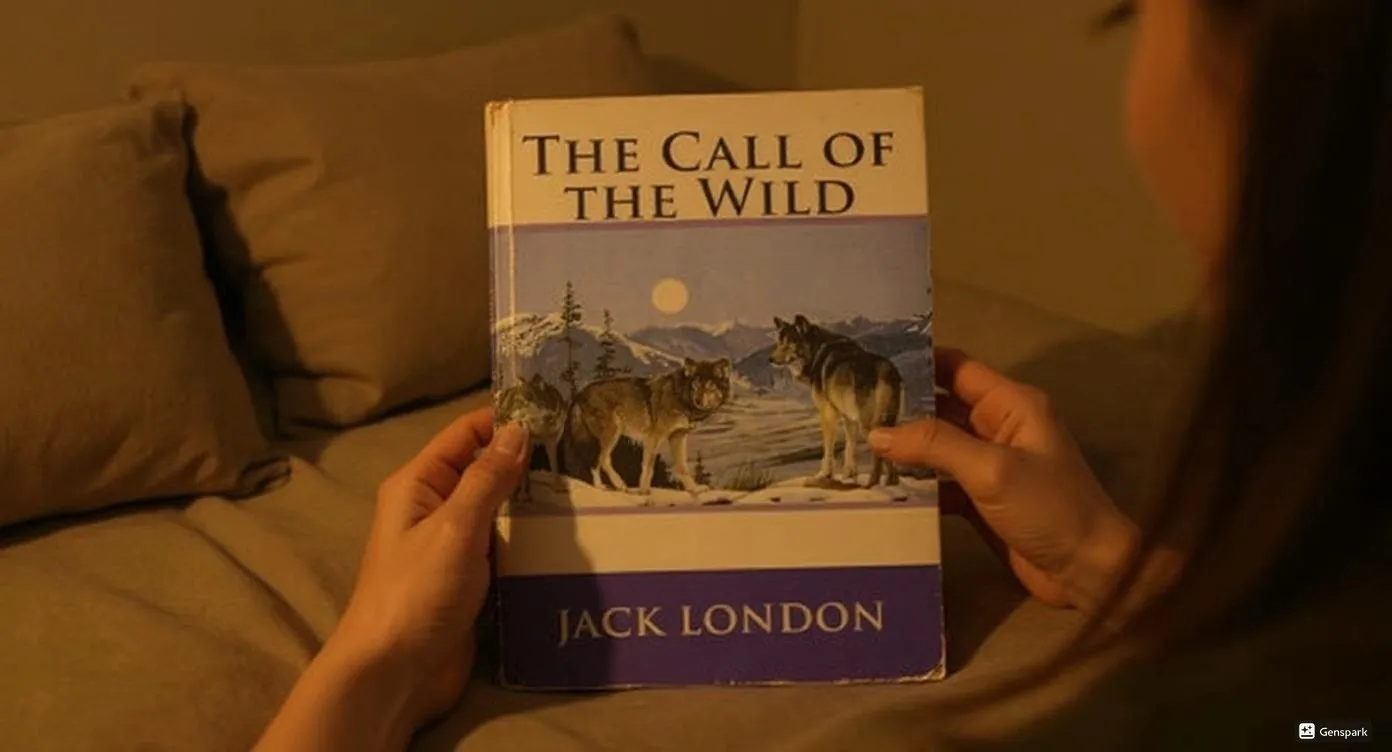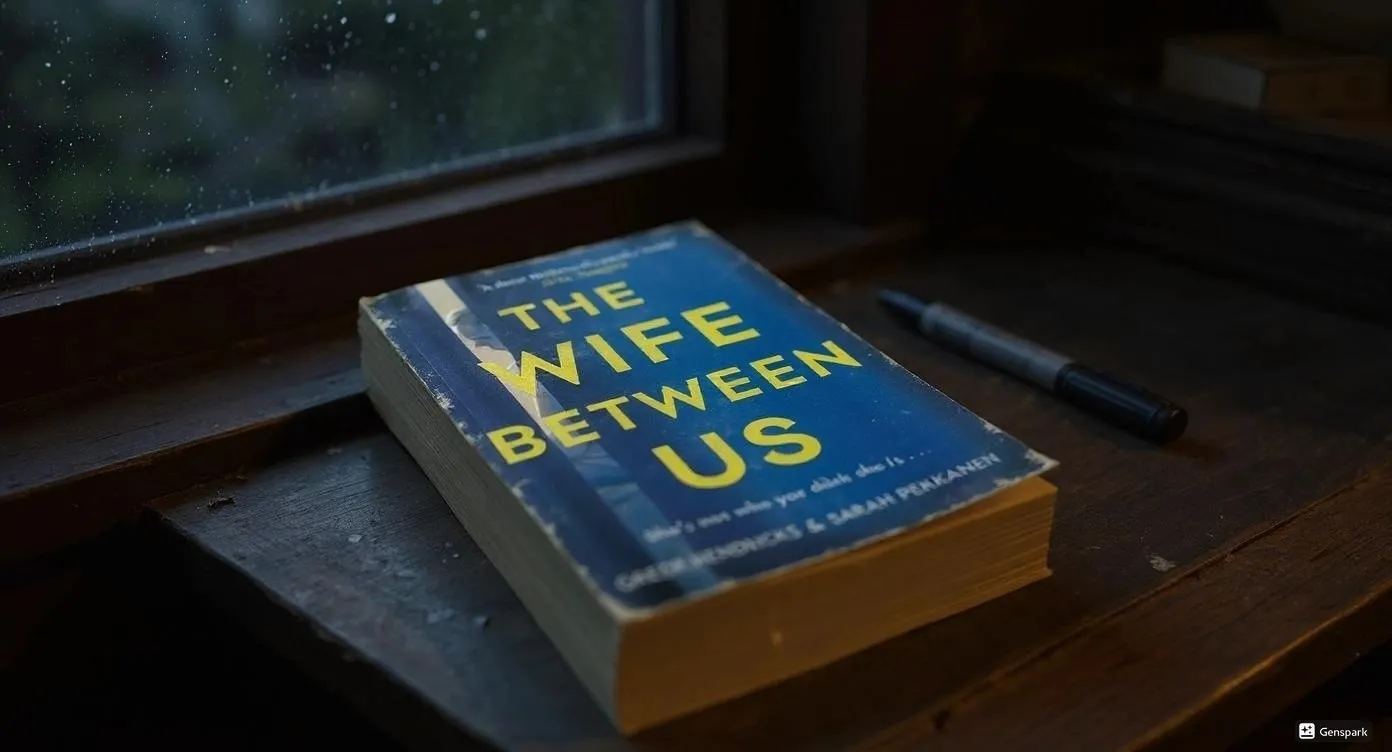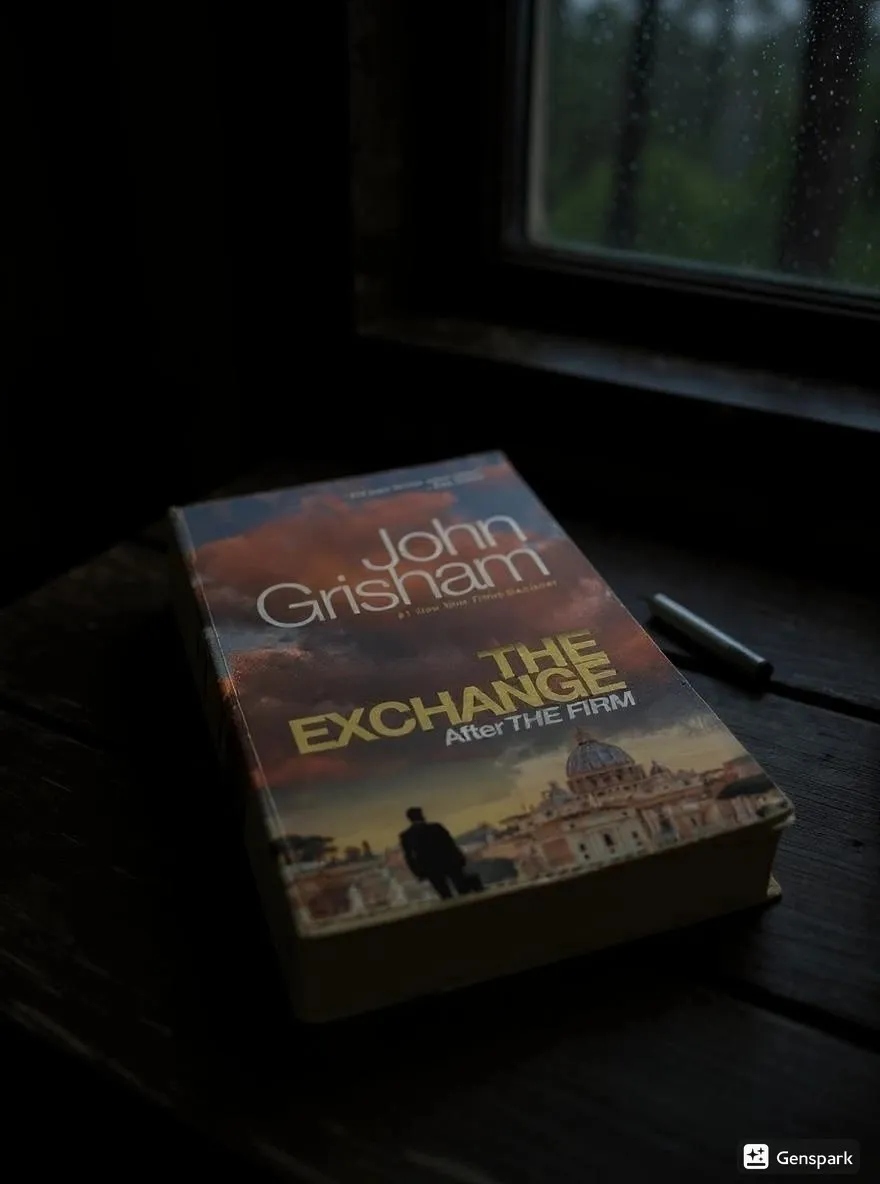I tore through We Can Never Leave by H.E. Edgmon in one wild, late-night sitting. This queer YA contemporary fantasy with a dash of sci-fi left me gasping more than once. If you love found family, messy teens, and a spooky caravan, you’ll want this book on your shelf.
Key Takeaways
We Can Never Leave is about five teens in a magical cult. They face secrets and danger.
They also deal with who they are and where they fit in.
The book mixes fantasy and sci-fi in a new way. The setting is spooky and mysterious.
It feels real and magical at the same time. The characters are not perfect and feel real.
They show true feelings and change over time. The story has strong ideas about found family, trauma, and queer identity.
Overview
Premise
I jumped into We Can Never Leave by H.E. Edgmon expecting a wild ride, and that’s exactly what I got. The story follows five teens who grew up in a strange, magical cult. One day, someone important disappears, and everything changes. The group must face secrets, danger, and their own fears as they try to figure out what happened.
The book mixes real-life struggles with a touch of magic and some sci-fi twists. I love how it doesn’t shy away from tough topics like identity and belonging. If you’ve read books like Junker Seven or The Deep Sky, you’ll notice the same blend of queer characters, science fiction, and big questions about who we are.
Five teens from a magical outcast cult
A mysterious disappearance shakes their world
The story explores friendship, trust, and survival
Queer identities and relationships are front and center
Setting
The setting grabbed me right away. Most of the action takes place in a spooky caravan community, which feels both safe and dangerous at the same time. The caravan sits on the edge of the ordinary world and something much stranger. I could almost hear the creak of the wheels and feel the chill in the air.
The author paints the place with just enough detail to make it real, but leaves room for my imagination to run wild. The mix of magic and sci-fi makes the setting feel fresh, like a mashup of The Mimicking of Known Successes and The Scourge Between Stars. I never felt lost, but I always felt a little uneasy—just the way I like it in a story like this.
We Can Never Leave by H.E. Edgmon: Story

Main Characters
I met five teens in We Can Never Leave by H.E. Edgmon, and none of them felt simple or easy to like at first. Each one carries secrets and scars from growing up in a magical cult. Their personalities clash, and sometimes I wanted to shake them for the choices they made. But that’s what made them feel real.
Ari: The unofficial leader. Ari tries to keep everyone safe but struggles with trust. I saw how much pressure Ari puts on themselves, and it hurt to watch.
Ezra: The skeptic. Ezra questions everything and pushes back against the group. I found Ezra’s anger both frustrating and honest.
Rowan: The peacemaker. Rowan wants everyone to get along, but sometimes hides their own pain to keep the peace.
Juniper: The dreamer. Juniper believes in magic and hope, even when things look bad. I loved Juniper’s gentle heart.
Cass: The wildcard. Cass keeps secrets and acts out, but I could tell it came from a place of deep hurt.
I have to give props to the author for making these characters so layered. Their flaws, secrets, and traumas come out slowly, and I felt like I was learning about real people, not just storybook heroes.
Reviewers often mention how these teens are messy, flawed, and sometimes hard to root for. The book uses different points of view and unreliable narrators, which kept me guessing about who to trust. I liked how the story didn’t rush to explain everyone’s past.
Instead, it let me discover their pain and growth bit by bit. The way the book explores cult trauma and queer identity feels honest and raw. Sometimes the drama between the characters got intense, but it always felt true to their experiences.
Plot Highlights
The plot of We Can Never Leave by H.E. Edgmon grabbed me from the start. Five teens, all outcasts from a magical cult, live together in a caravan community. One day, someone important disappears. That’s when everything starts to unravel.
The group must figure out what happened to the missing person. They don’t know who to trust, even among themselves.
Secrets from their pasts start to come out. Each reveal made me rethink what I thought I knew about them.
The caravan itself feels like a character. It’s both a home and a prison. The teens want to escape, but something always pulls them back.
The story mixes magic with hints of sci-fi. Sometimes I felt like I was reading a ghost story, other times a survival thriller.
The relationships between the teens shift as the mystery deepens. Friendships break and heal. Some characters find new strength, while others struggle to move on.
At one point, I actually had to put the book down and take a breath. The tension between the characters felt so real, it made my heart race.
I’ll be honest, the plot can get twisty. The unreliable narrators and shifting alliances kept me on my toes. Sometimes I felt lost, but I think that’s the point. The story wants you to feel the confusion and fear the teens feel. The writing style is poetic and layered, which adds to the mood. If you like stories where the mystery is as much about the people as the plot, you’ll enjoy this one.
We Can Never Leave by H.E. Edgmon stands out because it doesn’t give easy answers. The teens’ journey is about more than just solving a disappearance. It’s about facing their own pain, learning to trust, and finding out if they can ever really leave their past behind.
Themes
Identity
Identity sits at the heart of this story. I watched each teen wrestle with who they are, both inside and outside the caravan. Ari’s struggle with leadership and trust made me think about how hard it is to define yourself when everyone expects something different. Ezra’s anger felt real, like a shield against the world.
The book doesn’t sugarcoat the messiness of figuring out your identity, especially when you grow up in a place that tells you who you should be. I saw myself in their confusion and their small moments of clarity.
Belonging
Belonging in this book feels slippery. The caravan offers a kind of home, but it’s never truly safe. I kept asking myself, “Do these teens really belong anywhere?” The story reminded me of how fantasy can help us imagine new ways to belong. Rhonda D. Frederick’s research talks about how authors use magic and sci-fi to explore belonging beyond old limits.
I felt that here. The teens try to build a family out of broken pieces. Sometimes they succeed, sometimes they fall apart. That struggle made the story hit even harder.
“Sometimes I think we’re only together because we have nowhere else to go,” one character says. That line stuck with me.
Family & Trauma
Family in this book isn’t simple. The teens share a past full of secrets and pain. I saw how trauma shapes their choices and relationships. They fight, they forgive, and sometimes they just survive. The story doesn’t pretend healing is easy. It shows how found family can hurt and heal at the same time. I finished the book feeling both hopeful and a little raw.
Characters

Protagonist
Ari is the main character in this story. Ari tries hard to lead and protect the group. Sometimes, Ari finds it hard to trust others. Ari’s choices are not always perfect or brave. This makes Ari feel like a real person. Ari reminds me of other queer YA leads, but Ari’s story feels new. Here’s a table that shows how Ari is different from other queer protagonists:
Aspect | Ari (This Book) | Other Queer YA Protagonists (Malinda Lo’s Works) |
|---|---|---|
Genre Role | Leader in a magical, sci-fi setting | Fairy-tale, sci-fi, noir, superhero, rom-com |
Narrative Approach | Flawed, morally complex, unreliable | Metatextual, genre-subverting, playful |
Representation | Queer, layered, not just tragic | Sapphic, coming-out, happy endings, complex roles |
I think the author did a great job with Ari. Ari is not just a queer version of another hero. Ari’s identity is important in every choice. I felt like I understood Ari and learned something new.
Supporting Cast
The other teens in the group are interesting too. Each one has their own way of talking and lots of secrets. I wanted them to do well, even when they messed up.
Ezra: Always asks questions and gets mad, but is never dull.
Rowan: Wants everyone to get along, but hides pain with a smile.
Juniper: Brings hope and kindness, even when things are hard.
Cass: Acts wild and is hard to predict, but is really hurting inside.
These teens are not just background characters. They challenge each other, argue, forgive, and sometimes fall apart. Their mistakes make them feel like real people.
Representation
This book shows many kinds of people. The author talks about neurodiversity, trauma, and queer identity in a real way. The story does not skip over hard things like autism, moving to a new place, or finding family. It takes time to show pain and healing.
Other books might move fast and miss these parts. Here, every character gets to be real and imperfect. The mix of magic and real problems made me feel understood and surprised.
Real representation is important. This book shows the hard parts, and that makes it special.
Standout Elements
Genre Blend
I have to give props to Edgmon for mixing fantasy and sci-fi in a way that feels fresh. I usually get lost in books with heavy worldbuilding, but this one kept things clear and exciting. The story reminded me of when I first read short speculative fiction like Binti or All Systems Red. Those books helped me enjoy both magic and tech without feeling overwhelmed.
Here, the magic feels real, but the sci-fi twists add a new layer. I never felt like the story leaned too hard on one side. Instead, the blend made every chapter feel like a surprise.
Magic and technology work together, not against each other.
The setting feels both familiar and strange, which kept me curious.
I noticed the same kind of genre mix that made The Broken Earth trilogy stand out for so many readers.
Emotional Impact
This book hit me right in the feelings. I found myself rooting for these messy teens, even when they made mistakes. Some scenes felt chilling, and a few moments left me gasping. The tension between the characters made my heart race.
I could not put it down because I needed to know if they would find hope or just more pain. The story does not shy away from showing how hard it is to heal. I finished the last page feeling both hopeful and a little raw.
Comparisons
If you love queer YA fantasy with real emotion, you might see some similarities to The Witch King or The Raven Boys. Edgmon stands out by mixing tech with magic, which is rare in this genre. Other books like I Kissed Shara Wheeler focus more on romance or traditional fantasy.
Here, the focus stays on found family, trauma, and queer identity. The cast feels powerful and honest, much like the best parts of other queer YA stories, but the tech-magic blend gives it a unique twist.
Verdict
Strengths
I have to give props to Edgmon for writing a book that feels so real and raw. The biggest strengths of We Can Never Leave by H.E. Edgmon jump out right away:
Messy, honest characters: Every teen in this story feels like someone I could meet in real life. Their pain, hope, and mistakes made me care about them.
Genre blend: The mix of magic and sci-fi kept me guessing. I never felt bored or like I had read this before.
Emotional punch: Some scenes left me gasping. The story does not shy away from tough feelings or hard truths.
Representation: I saw queer, neurodiverse, and traumatized characters shown with care. The book never felt like it was checking boxes. It felt honest.
I couldn’t put it down because I needed to know if these teens would find hope or just more pain.
Weaknesses
To be fair, not everything worked for me. I want to be honest about what might trip up other readers:
Twisty plot: Sometimes I felt lost in the story. The unreliable narrators and shifting alliances made it hard to follow at times.
Intense drama: The tension between characters got so high, I had to take breaks. Some readers might find the drama a bit much.
Pacing: The book moves fast, then slows down. I wanted a steadier pace in some chapters.
Limited answers: If you want every mystery solved, you might feel frustrated. The story leaves some things open.
I finished this book in one sitting, heart pounding and eyes wide.
If you love queer YA, found family, and stories that feel raw and real, this one’s for you.
- Dionysus Review Rating: 7/10—messy, chilling, and unforgettable.
Sip The Unknown—Discover Stories You Never Knew You’d Love!
Dionysus Reviews Has A Book For Every Mood
Biography & Memoir
Fiction
Mystery & Detective
Nonfiction
Philosophy
Psychology
Romance
Science Fiction & Fantasy
Teens & Young Adult
Thriller & Suspense
Frequently Asked Questions
Is “We Can Never Leave” scary or just mysterious?
I found it more chilling than scary. The story gave me goosebumps, but I never felt too afraid to keep reading.
Do I need to like sci-fi to enjoy this book?
Not at all! The sci-fi parts feel light. I think anyone who loves queer YA or found family stories will have fun with it.
Will there be a sequel?
I haven’t seen any news about a sequel yet. The ending leaves some questions open, so I hope we get more someday!









